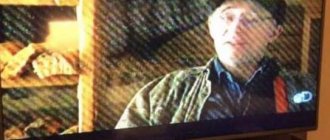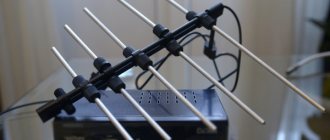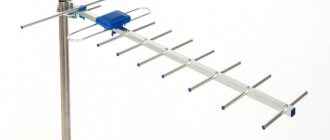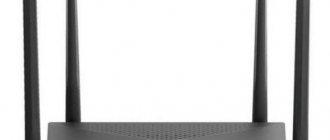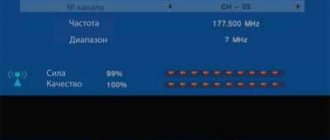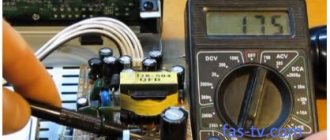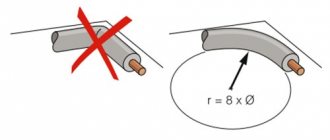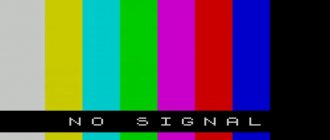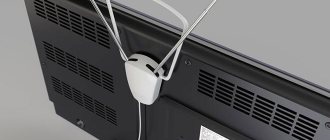Currently there are the following types of television broadcasting:
- Terrestrial – the signal arrives from the TV tower to the receiver;
- Satellite – the signal arrives from the satellite to the user’s individual dish-antenna;
- Cable – the TV signal is distributed via cable;
- Internet TV – transmission is carried out via Internet cable.
Terrestrial TV stands at the origins of television, but, despite its long history, does not lose its relevance. A huge part of the viewing audience continues to use this type of television broadcasting. The main disadvantage of over-the-air transmission is the coverage area. That is, the further the receiving antenna is from the repeater, the worse the signal is. This problem can be solved to some extent by using an amplifier for the TV antenna.
Let's consider the types of such devices, characteristics for choosing them, pros and cons, as well as ways to make such devices with your own hands in order to amplify the signal yourself.
What is an antenna amplifier and how does it work?
A TV antenna signal amplifier is a device whose task is to make the impulse resulting from the influence of an electromagnetic wave more powerful than the one initially received.
Principle of operation:
- An electromagnetic wave impinges on the conductor that makes up the TV antenna. This happens very quickly because it travels at the speed of light.
- As a result of electromagnetic induction, a current pulse appears in the conductor. However, its strength is not sufficient for correct operation.
- The pulse enters the amplifier.
- The device, using a current voltage of 5 to 12 volts, forms a “copy” of the received signal, which already has greater power.
- A tuner (internal or built into the TV) deciphers the signal, turning it into sound and video.
In addition to increasing power, the amplifier additionally filters the signal. In any antenna, in addition to the required range, there are always various unnecessary currents circulating - interference from operating electrical equipment, unnecessary stations, etc. The amplifier cuts off all unnecessary and increases the level of only useful signals.
To enhance or not
The task of the amplifier is to make sure that the level of the television signal passed from the antenna through the cable to the TV receiver becomes sufficient for the tuner to operate. Therefore, it is only necessary when the pulse power is too low.
For it to work correctly, 2 simple conditions are enough:
- presence of signal;
- proper operation of the antenna and cable.
But in the following cases, the amplifier may be harmful:
- The antenna receives a TV signal of sufficient power. Due to the specifics of the DVB-T2 standard, overamplification will lead to “artifacts” (for example, the overlapping of several programs on one another on one channel).
- The antenna receives the TV signal too poorly. To amplify, you need a high-quality original, otherwise the device will not work. There is no point in increasing the noise power.
For proper reception you need a good outdoor (or powerful indoor) antenna. There is no point in purchasing an amplifier for low-power “two sticks” or “wire loops”.
Check the result using a multimeter
Once the circuit has been designed and connected, it makes sense to test it and check the characteristics of the resulting design. To do this, you need to have a tester - a multimeter or any other similar device.
Check the following settings:
- The characteristic impedance of the cable should not exceed 75 Ohms.
- The difference between the braid of the coaxial cable and the central core should be several tens of ohms. If the device shows “0”, it means there is a break or short circuit.
- When connecting the central core and braid, the device should show infinity, that is, the maximum of the scale. But if both the braid and the core are disconnected from the antenna and shorted to each other, the result should be zero.
If all 3 tests are passed, then the amplifier is connected correctly.
What factors influence the deterioration of a TV signal?
The reasons for interference in broadcasting may be different. The most common of them:
- distance of the TV from the repeater;
- unsuitable TV antenna;
- a large amount of noise within the antenna radius;
- physical obstacles to signal transmission (high-rise buildings, trees, industrial buildings);
- non-working condition of the cable;
- incorrect orientation of the transmitter;
- metal structures near the antenna;
- signal distribution to several receivers;
- outdated technology.
Signal amplification methods
Before purchasing an antenna amplifier for your TV, you can try to adjust the signal quality using the following methods:
- Change the location of the antenna. More precisely, point it towards the transmission tower.
- Increase the number of antennas to improve signal quality. They must be installed at the highest point. If this is a private house, then on the roof.
- Buy a more powerful satellite or terrestrial antenna, check the version of the set-top box.
- Remove all metal objects located near the receiver or antenna.
- Create a common-mode antenna array (CAP) effect. The goal is to make the signal phases the same.
Important! Check the version of the receiver (set-top box). If it is outdated or not designed to receive a digital signal, the steps described above will not help. Also, the TV signal amplifier will not work.
Reducing losses
To improve the signal from a television or satellite antenna, you can try to reduce losses in the system:
Read also: How to connect wires by color
- Reduce the length of the cable to the TV. This distance should not be more than 10 meters.
- Use a better quality cable, replace it if it has been used for more than 10 years.
- Various types of twisters and splitters also degrade the TV signal. You need to install a special amplifier in front of the splitter, but even then you will not achieve very good image quality.
- Remove all metal objects that could conduct electricity from the antenna area.
Classification of TV amplifiers
Amplifiers are divided into types:
- Mast. Those that are attached to the mast itself. Power is supplied to them via a coaxial cable. But this is precisely why such amplifiers do not last long, they can fail during a thunderstorm and lose quality due to oxidation of contacts. Mast amplifiers usually work for a couple of years.
- Internal. These are more convenient because they are located next to the receiver. True, signal losses still occur through the cable.
Antenna amplifiers are also divided into subtypes:
- Range. SWA and LSA devices, which are necessary when installing array antennas.
- Multi-band. Devices such as ALCAD and TERRA, which work for close and long-range reception. They are able to perceive several signals simultaneously from different sources and combine them into one.
In addition, all antenna amplifiers come with their own power supply. They are also different: adjustable and non-adjustable with external or internal design.
Advantages and disadvantages of antenna amplifiers
The use of antenna amplifiers for UHF is both necessary and undesirable. Already at the planning stage of any home TV network, it is necessary to ensure that the number of amplifiers used is as small as possible. Each antenna amplifier tends to distort the video stream, and when several distortions are layered on top of each other, you can get the opposite effect to the expected one.
Using an amplifier with constant gain does not always lead to the expected effect. The disadvantage of this solution, oddly enough, is precisely its main characteristic - amplification. In many places it is necessary to receive broadcasts from several transmitters, or the repeater itself emits signals of different levels. Using a wideband amplifier over its entire operating range can result in excessively high levels of some frequencies. This, in turn, will lead to an overload of the permissible signal level that enters the input of the decoder or connector of the television receiver. The result will be a significant deterioration in reception quality parameters, which will lead to the disconnection of the connector itself. In such cases, amplifiers must be able to adjust the gain, but not over the entire operating range, but independently at individual frequencies.
Another feature is the way the amplifying circuit is powered. If your amplifier for a DVB-T2 digital television antenna requires a 5 Volt power supply, then it is better to supply it via cable from the tuner itself. It’s worse when the amplifier “asks” for 12 Volts. There are two possible options here, both with looming problems:
- its power supply with a low-frequency transformer for a 50 Hz power supply. The unit is not as lightweight as pulse units for recharging a mobile phone; this unit does not produce high-frequency interference, but produces low-frequency ripples, which over time can degrade the performance of the antenna amplifier;
- The power supply with pulse conversion is very light, practically does not heat up, does not produce low-frequency ripples, but is guaranteed to produce high-frequency interference, which is not at all useful to the amplifier.
What types of amplifiers are there?
Devices that amplify television signals vary in classification and design.
There are devices for digital TV antennas and for analog signals. They have a power supply, both external and internal. The external unit is larger than the internal one, its input voltage depends on the amplifier, and can consume 5, 12, 18 or 24 V. The internal unit consumes up to 10 V, it requires a stable voltage of electricity. It may fail during power surges. If the unit burns out, you will have to replace the entire antenna completely.
Types of amplifiers depending on the received frequency
Devices according to classification are distinguished into:
- Broadband
These models are capable of covering a wide range of amplified frequencies. As a rule, they are used if the TV antenna signal is good, but does not provide an ideal image.
- Band
Designed to receive frequencies either meter (MV) - from 30 to 300 MHz, or decimeter (UHF) - from 300 to 3000 MHz. Can be used if the TV signal is very weak. Digital TV requires a UHF frequency range.
- Multi-band
Models with separate adjustment of different ranges.
According to the required voltage, they are divided into the following types:
- Five-volt.
They are connected using a coaxial cable and attached to the antenna.
- Twelve volt.
These devices work with a power supply.
Main selection criteria
The amplifier for the television antenna is selected according to the technical criteria of the device and in accordance with external factors (for example, the location and installation conditions). The most important thing is to take into account the characteristics that affect the quality of the television signal, for which they resort to the use of additional devices.
Operating frequency range
Three devices are associated with the frequency range: a television, an antenna and an amplifier. First of all, the antenna is selected. In this selection, it is necessary to take into account the superiority of narrow-beam over wide-range ones in terms of signal strength.
If the repeater is located close to the reception area, then an all-wave unit is suitable, capable of covering a wider range. Receiving a signal from a remote television tower will be achievable using a device adapted to a limited frequency range (for example, MV or UHF).
The amplifier is selected in accordance with the frequency response of the antenna. If the range does not match, the existing device will not be able to function.
Noise figure
Using an amplifier, the TV signal-to-noise ratio should be adjusted upward. Taking into account the fact that when transmitting data, each device receives its own noise, as the signal increases, they also become more significant.
It is generally accepted that the value of the noise effect should not be more than 3 dB. Only under such conditions can we talk about guarantees of good quality TV signal transmission. However, newer devices may have a lower value of 2 dB.
Gain
The presence of the highest possible coefficient does not guarantee the best transmission quality. Moreover, with excessive amplification, the TV signal will be distorted with the opposite effect (clipping or overload).
To measure the parameter, dB is used, and its average values are:
- decimeter - from 30 to 40 dB;
- meter - 10 dB.
It follows from this that decimeter channels will have a coverage of 20 to 60 TV channels, and meter ones will have no more than 12. If the gain increases by 15-20 dB, we can talk about a good result.
When choosing an amplifier by coefficient, you need to base it on actual conditions and reception level. As a rule, the distance from the television tower (repeater) is taken into account. If the TV tower is located in direct line of sight, then purchasing an amplifier is not required.
Active or passive antenna
Antennas for receiving television signals can be passive and active:
- a passive antenna receives a signal only due to its own shape;
- for the active antenna , which increases the strength of the useful signal.
The active antenna must be provided with additional power from the network. As a rule, an amplification device is connected using a 9 or 12 V adapter. If the device is located outdoors, then you need to protect it from the rain. Be sure to take into account the information in the manufacturer's instructions warning about the possibility of interference if the device is not installed correctly.
A passive antenna can also be converted into an active one if an amplifier is added to it. This option may be more convenient than buying an antenna with a built-in amplification device - if the amplifier breaks down, it can be easily replaced. You can place it not next to the antenna itself, but in the attic or in a room, which will ensure a longer service life of the device.
Methods for ensuring reliable TV signal reception
There is no ready-made recipe. Each case is specific and requires an individual approach. What to do in this situation? In many cases, the signal does not require maximum amplification, just as it is not necessary to amplify the entire “bouquet” of signals.
To make sure which case we are really dealing with, it is necessary to accurately measure the signal level from the receiver antenna. This is necessary in order to understand whether we are receiving a direct or reflected signal (or even several), and determine further steps.
One way to get reliable reception is to correct the direction of the antenna or its location in height, and often both. Sometimes it is enough to move the antenna mast a meter or two to get much better quality broadcast.
It is also worth having a level meter on hand when you need to make sure whether the broadcast quality is sufficient and only requires additional amplification, or perhaps you are receiving a strong but excessive signal? In case of a strong signal, you can choose the right antenna. It may also be enough to deliberately change the direction of reception or the location of the antenna to weaken the signal while at the same time eliminating its reflected rays.
When receiving digital TV, you should remember that when strong radio frequency oscillations are superimposed on each other, you need to opt for a passive directional antenna without the use of any amplifying elements. The amplifier to the TV antenna in this case will contribute to intermodulation, which will lead to failures and instability of the digital decoder.
Methods for amplifying TV antenna power
In fact, ways to increase the power of a TV antenna can be correlated with medical approaches: use “therapy” or immediately go the “surgical” route. As for drastic measures, the very first step here is to change the antenna itself to a stronger and more expensive one. This also includes purchasing an active antenna instead of a passive one.
But you can act more gently, especially if your antenna has served you honorably for more than one year:
- experiment with the direction of reception;
- raise the antenna higher;
- if possible, clear the path for the signal;
- eliminate all “non-contacts”, replace the cable;
- equip the antenna with a signal amplifier. Many external antennas have the technological ability to install an amplification board if it turns out that one is needed.
Using an antenna amplifier
TV antenna signal amplifiers are the very first, after the antenna, to perform the initial correction of its level.
The type of device that's right for you depends on the reception conditions in your area and the specific needs of your entire TV installation. If you need to amplify the entire RF band, you can use a fixed gain broadband amplifier. If, on the contrary, in your region the correct reception of frequencies from the upper UHF band is significantly influenced by high-frequency transmitters and interference occurs, caused, for example, by passing cars or a neighbor's lawn mower, then you will need a different amplifier model - with a fixed gain, but with a limited operating range frequency
Modern amplifiers from various manufacturers have a fairly ergonomic shape, which, in fact, allows them to be mounted anywhere on the coaxial antenna cable. This means that you can use the amplifier in an existing antenna installation without having to disassemble the antenna. However, it should be remembered that due to the violation of the signal-to-noise ratio with increasing distance from the antenna, it is recommended to install it as close to the antenna as possible.
Connecting the antenna to the TV
There are three types of antennas in total and each has its own features and characteristics.
To the common house antenna
A common house antenna for television is a set of devices designed to receive signals from various types of transmissions. The common house antenna broadcasts the image to the residents of the house who have entered into a service agreement.
This type of antenna includes the following:
- A structure installed on the roof of a building;
- Special amplification technology that provides the required signal level for users;
- A system of cords and distribution parts that transmit the signal to apartments.
This type of antenna has a fairly close connection with the electrical system in a residential building. Equipment needs power to amplify the signal, so when laying wires you need to take into account the power distribution.
Since the antenna with all additional parts is the property of the house, its maintenance should be handled by the management company that is responsible for utility issues. Residents are charged a fee for using these services.
You can gain access to television channels by concluding an agreement with a service company. Once this is done, the user must connect to the brush, which distributes the energy. This is done as follows:
- First you need to purchase a coaxial cord, the length of which should be sufficient for the distance from the panel to the TV, and there should also be a few meters left. The characteristic impedance of the cable must be 75 Ohms;
- After this, it is necessary to lay the cable by making a hole in the entrance opening through which the wire is laid;
- The wire must be connected to the splitter to the shield connector, and the outer shell must be cut and attached to the distribution unit;
- You need to attach the plug to the end of the cable, which is located in the house, removing approximately 3 cm from the insulating layer. You also need to wrap the braid on the outside and remove the insulation from the steel core;
- At the end, the cable must be connected to the TV, after which you can start searching for television channels.
During the connection process, it is necessary to observe the radius of deflection of the cord so that the central core does not break. Moreover, the cord cannot be bent at a right angle.
To an individual passive antenna
This type of antenna has a metal structure to which a cable is attached and extends from the receiver. The antenna does not have any additional elements, and the frame contains a huge number of antennae that help the metal elements better capture electric waves from the magnetic field.
Passive antennas are large in size.
The advantages of this type of antenna include the fact that they are very easy to install and have a long service life. Also, passive antennas are inexpensive, and the likelihood of a short circuit is almost zero. The disadvantages include the fact that they are quite difficult to position, and this antenna is very strongly influenced by weather conditions.
To connect, you just need to insert the cord into the connector of the television transmitter. Immediately after this, the user can begin setting up channels.
To an individual active antenna
An active antenna has various horns and antennae that also help in picking up signals. Most often, this type of antenna is equipped with an amplifier, but in addition, they can also have a noise suppressor built into them. Thanks to it, the antenna can be placed in places quite far from the towers.
Due to the additional peripherals, the catcher requires a separate power source, so it must be plugged into an outlet.
You can connect the antenna using a separator, which is inserted inside the cord and secured with a clamp. The separator connector is then connected to the antenna output on the transmitter.
Types of amplifiers for TV antennas for the garden and home
There is a generally accepted division of all digital signal amplifiers for TV, which can be purchased at a regular electrical goods store. They are divided into types according to frequency range and installation location. Broadband devices provide tuning on a large number of available frequencies
At the installation location
According to this parameter, all presented models are divided into two types - depending on the features of installation and installation of the device. So, all antenna amplifiers for a TV with 20 channels or more can be:
- internal , which are a small board that can be installed directly next to the receiver. In this embodiment, there may be deterioration of the signal entering the amplifier itself due to losses in the cable;
- remote or mast mounted , located on a long pole at the location of the antenna. Thanks to their long range, they provide a high-quality signal improvement. But the main disadvantage can be considered fragility, since a strong wind or lightning strike will eventually damage the device or completely disable it.
Connecting the amplifier requires a power source of 5 or 12 volts.
There is also a division into active and passive amplifiers. In the first case, the amplifier board is mounted directly on the antenna body. This allows you to receive more channels. But there are some disadvantages: frequent failure of the board under the influence of external factors and gradual oxidation of structural elements.
The second type involves the use of an external amplifier, which is purchased separately. This is a more profitable option, but requires additional configuration and installation of the device.
By frequency range
According to this criterion, all presented models can be divided into three types. Depending on the chosen category, different goals are pursued, since each type is used to achieve a specific result. Devices can be:
- broadband . Devices that are most often used as part of indoor home antennas for a TV with an amplifier. Their task is to improve the quality of broadcasting on a large number of receivers at once;
FOR YOUR INFORMATION !
This type of device demonstrates stable operation in both the decimeter and meter ranges.
- multi-band . Devices the use of which is advisable for receiving devices located on long masts. Most often, the use of this type is observed in private homes;
- range . Amplifiers that are needed to ensure high-quality reception from a source located at a considerable distance from the receiver. In addition to the signal correction function, these devices have the ability to reduce noise that appears as the cable length increases. Most often used to improve broadcasting of digital television in DVB-T format
Street
Street ones are the most popular for organizing viewing of terrestrial TV outside the city, as they allow you to receive the maximum possible terrestrial signal, amplify it and distribute it to several TVs. Gain level is an important characteristic when selecting a device. The quality of on-air signal reception will depend on it, as well as on the location of the system.
You should select an outdoor antenna for a TV in your dacha according to the following indicators:
- power 10 dB – up to 20 km. from the tower;
- power up to 15 dB – up to 40 km. from the tower;
- power up to 17 dB – up to 80 km. from the tower;
- power up to 22 dB – up to 120 km. from the tower.
Another important characteristic is the material from which the antenna is made. This is usually either aluminum or steel coated with paint. The first one is preferable: it will not rust and will last longer. Steel ones, of course, are much lower in price. But over time, the appearance will be damaged, the device will become unusable and will require replacement. There is another type of coating - anodized aluminum. This is additional protection that increases the service life of the device. In this case, the equipment acquires a beautiful golden color. Popular Dutch antennas from the FUNKE brand are supplied with just such a coating.
How to boost a digital TV signal with your own hands for 20 channels
How to amplify a digital TV signal on your own for standard digital 20 channels:
- Change the antenna position. It is important that it is directed in the direction where the tower is located.
- Using an amplifier.
- Adding additional television antennas.
- Pay attention to interference - remove metal objects.
- Check the cable, it may need replacing.
Gain selection
The presented criterion is responsible for receiving and decoding an incoming signal with a specific quality. In this case, the gain depends on the value of the gain. When selecting, it is important to take into account that the power of the amplifier must exceed the antenna parameter. Otherwise, it will not bring the desired result, and you will not notice the improved quality.
Basically, for DVB-T2, a gain of 32 dB is chosen. This indicator will be quite sufficient for a cable whose length does not exceed 32 meters. But, equally important is the choice of the antenna itself. Please note that if the signal level is insufficient, amplification will cause large noise.
Additionally, you can increase the cable length, but this will weaken the incoming signal. It is impossible to select the most accurate coefficient indicator. But, you can find out the approximate value.
Where to point the antenna to receive a digital signal
To correctly determine the location of television towers, use the official website - map.rtrs.rf. By going to the page, you will see a map with all repeaters in the country, including coverage areas. In the search bar located at the top, enter your city of residence. Images of all the towers in this area will appear on the map.
Click on the locality and check the distance of the repeaters. Data on broadcast frequency, numbering of TV channels, and the presence of multiplexes will also be demonstrated.
Power supply
The peculiarity of such equipment is hidden in the power supply, separate from the antenna. Today, amplifiers can be divided into two types depending on the power supply:
- At 12 Volts. Often used for summer cottages or indoor antennas.
- At 5 Volts. Suitable for continuous digital television broadcasts. Often used in sports bars.
Idea No. 4 – Apartment option
There is another way to make a powerful antenna for a TV from improvised materials, which is suitable for both outdoor and indoor use.
To make the device you will need the following materials and tools:
- 4-meter copper wire, cross-section 4 mm2;
- board of arbitrary thickness, 55 cm long and 7 cm wide;
- wood screws;
- ruler or tape measure;
- a simple pencil;
- screwdriver;
- soldering iron;
- plug
So, first, according to the drawing, we drill holes in the board:
Then we transfer the drawing data to the board and drill in the appropriate fastening points.
Next, the copper wire must be cut into 8 pieces of 37.5 cm each.
In the middle of each of the 37.5 cm sections, the insulation must be removed (as shown in the picture).
We cut off 2 more copper wire sections 22 cm long and roughly divide them into 3 equal parts, again removing the insulation at the inflection points.
We bend the prepared wire in exposed areas. We draw your attention to the fact that for those segments that are bent in half, the distance between the ends should be 7.5 cm (the optimal value for receiving a signal from a homemade television antenna).
Next, we attach the plug to the finished homemade product, and connect the television cable to it.
This concludes the manufacturing process. We select a suitable location and install the device.
So we have provided the simplest instructions. We hope that now you know how to make a home TV antenna with your own hands! We draw your attention to the fact that today on the Internet you can find many other options in which inventors do without cans and wire. Among other available means, copper tubes, aluminum disks and electrodes are often used. The advantage of the options we have listed is that you can quickly make such antennas for a TV with your own hands, without spending the whole evening on it.
Related materials:
Do-it-yourself digital TV signal amplifier - diagram
Before we look at the instructions for assembling your own amplifier, let's study the types of antennas currently in use:
- Telscopic. Another name is core. It is characterized by simple manufacturing and is used at a distance of up to 5 km from the tower. It has circular polarization, which allows it to detect various radio waves.
- Patch antennas. Basically, rectangular elements protected by plastic are used in production. Has vertical and horizontal polarization. The main advantage is the increased coefficient of gain and the ability to accept re-reflection.
- Wave channel. Is the most used option. It is a structure of directors, reflectors and vibrators located on a traverse. The wave channel is often placed outdoors; models with reflectors can be found. They are also often equipped with amplifiers and filters.
- Zigzag. The main advantage is the ease of assembly and the ability to accept reflection. That is, zigzag antennas can be easily assembled at home.
You can amplify the digital signal of a TV antenna at home using the last option, that is, using a zigzag antenna. In this case, the gain will depend on the number of squares. This way you can assemble the structure yourself, spending a minimum of money.
What is the operating principle of such equipment? Pay attention to the diagram where input 1 is shown - voltage is supplied through it. Having a resistor labeled R1 connected to input 2 will shift the voltage to the operating area. Output 6 accepts the input signal, and the amplified signal will be taken from the third node and sent directly to the receiver.
Sources
- https://ProDigTV.ru/efirnoe/antenna/usilitel
- https://odinelectric.ru/equipment/kak-usilit-signal-ot-tv-antenny
- https://tv-vybor.ru/stati/798-usilitel-tv-signala.html
- https://tvdigitally.ru/efirnoe-tsifrovoe-televidenie/televizionnyj-usilitel
- https://yanashla.com/luchshie-usiliteli-signala-dlya-antenny-televizora/
- https://tehno.guru/ru/usilitel-signala-dlya-antenny-televizora/
- https://ProDigTV.ru/efirnoe/antenna/kak-usilit-signal
- https://smarts-iptv.com/kak-usilit-plohoy-signal-cifrovogo-televideniya.html
Indoor
The easiest option for connecting to terrestrial television is to buy an indoor antenna. The device already comes with a built-in antenna cord of a certain length. There is no need to perform any installation. I bought it, connected it, configured the channels and you can enjoy watching. Most modern antennas are enclosed in a decorative plastic case and have a beautiful design. The device can be placed on a TV, cabinet, or window. It all depends on the signal level in the room and your wishes. Please keep in mind that the windows, walls, and partitions of the dacha greatly impair reception, so you can use an indoor antenna provided that the windows of the dacha house face the TV tower and the distance from it does not exceed 20 km. It is possible to connect only 1 TV in the house. The equipment is not suitable for supplying a signal to a large number of televisions.
